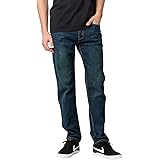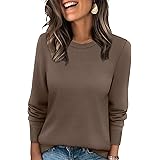Feeling overwhelmed by the sheer variety of men’s fashion today? As explored in the accompanying video, the landscape of men’s style has become a complex, yet incredibly exciting, arena. Gone are the days when a simple pair of well-fitting jeans and a basic shirt were considered peak fashion advice. The internet has irrevocably transformed how men approach their wardrobes, fostering a dynamic environment where countless subcultures thrive.
The journey through contemporary men’s fashion is not merely about covering the body. It is about personal expression, cultural commentary, and often, a touch of playful irony. This article delves deeper into the major movements and niche communities shaping men’s attire, offering insights beyond the surface-level observations. Each style is rooted in a purpose or inspiration, making sense of the seemingly disparate trends that dominate the industry.
The Evolution of Men’s Fashion: From Simplicity to Subcultures
A significant transformation has been observed in how men’s fashion is perceived and consumed. A decade or so ago, advice for men’s style was often straightforward and practical. The focus was generally placed on foundational pieces that offered versatility and a neat appearance. However, the proliferation of online forums and social media platforms has fragmented this simplicity.
The world of men’s fashion has expanded into a vast ecosystem of interconnected subcultures. These range from the widely recognized realms of business attire and high fashion to the rapidly evolving sectors of casual wear and streetwear. Each segment, in turn, hosts even more specific groups, such as sneakerheads, proponents of techwear, and devotees of avant-garde styles. Understanding these diverse currents becomes easier when their underlying motivations are explored.
Timeless Elegance: Understanding Formal and Business Attire
Some elements of men’s fashion are perceived as being truly enduring. Formal and business attire, for instance, has remained remarkably consistent over time. It has been noted that the fundamental components of a suit have barely changed for over 125 years, aside from minor stylistic shifts like the disappearance of certain hat styles. This consistency is largely attributed to its inherent purpose.
A well-tailored suit is universally recognized as a symbol of respectability and professionalism. It is an outfit carefully constructed to convey a sense of gravitas, ideal for formal meetings or significant events. The power of this ensemble is not in its novelty, but in its established message: a wearer is signaling a put-together individual, representing an equally respectable entity. Therefore, its effectiveness is often tied to proper fit and appropriate context, rather than fleeting trends.
Navigating the Modern Workplace: The Rise of Business Casual
As corporate environments have evolved, so too has the dress code. Business casual, a more relaxed yet still professional style, has become significantly more prevalent. This shift is partly a reflection of the increasing move from face-to-face interactions to online communications. A less formal approach to dressing can be accommodated more readily in virtual settings.
The business casual style allows for greater comfort without sacrificing professionalism entirely. However, the video’s playful observation highlights an important consideration: age-appropriateness. While suitable for professionals, this look might appear incongruous on younger individuals, such as high school or university students, who may not have a regular need for button-down shirts and trousers. It is generally advised that this aesthetic is better embraced after one has transitioned into a more established professional phase, where its implications of responsibility and maturity resonate authentically.
Casual Wear: A Canvas for Personal Expression
Beyond the formal constraints, casual wear offers the broadest scope for personal expression in men’s fashion. This segment is undoubtedly the most rapidly evolving area. It is here that individual personality can truly be displayed through clothing choices. Popular culture, particularly the influence of prominent musicians and public figures, plays a substantial role in shaping current casual trends.
A noticeable shift in recent years has been the significant growth of streetwear and designer brands among younger demographics. What was once the exclusive domain of affluent, older individuals, with luxury brands like Gucci often being purchased for significant anniversaries, is now accessible to a much wider audience. Many young men are increasingly investing in designer casual wear, fueled by a desire to emulate celebrity styles and participate in a burgeoning fashion community. This trend illustrates a democratizing effect within the luxury market, where aspiration is met with more attainable entry points, such as through coveted sneaker releases or limited-edition drops.
Streetwear and the Art of Ironic Fashion
One of the most intriguing aspects of contemporary streetwear is its embrace of ironic fashion. This involves the deliberate wearing of items that might traditionally be considered “unfashionable” or even “uncool.” The underlying premise is a sophisticated understanding of style: to intentionally choose something unfashionable requires a profound knowledge of what is currently fashionable. This subverts expectations and challenges conventional notions of taste.
Examples of ironic fashion have been observed over time, evolving from simple acts like wearing a pink shirt or a bun (which once defied traditional masculinity) to donning overalls and bucket hats in an urban environment, implying a disconnect from their utilitarian origins. More recently, this irony has extended to items like jean joggers or retro fanny packs, mimicking a perceived “uncool” middle school aesthetic. Brands like Supreme have mastered this concept, building an empire on selling seemingly mundane items—from t-shirts with a box logo for $30 to literal bricks. The brick, a prime example, originally priced around $30, famously resold for upwards of $1,000 due to its scarcity and cultural cachet, illustrating the consumer’s willingness to invest heavily in items imbued with ironic significance and brand exclusivity.
Exploring Niche Fashion Subcultures
Delving deeper into men’s style reveals a multitude of highly specialized subcultures, each with distinct aesthetics and philosophies. These groups often push the boundaries of conventional style, exploring extremes of existing genres.
The Allure of Sneaker Culture
The sneakerhead community is a massive and influential force within casual wear. Members are characterized by their fervent passion for athletic shoes, often collecting rare, limited-edition releases. It is not uncommon for individuals to camp overnight for a coveted pair of Jordans, with the intention sometimes being to wear them once for social media documentation before reselling them at significantly inflated prices, reportedly five times their original cost. This practice highlights both the intense demand for certain models and the speculative market that has developed around them.
Embracing Minimalism: Normcore and Palewave
In contrast to overt displays of branding, styles like normcore embrace intentional blandness. This aesthetic involves dressing as anonymously as possible, often utilizing generic, everyday items to create an “anti-fashion” statement. The irony lies in the deliberate effort to look average. Palewave, another minimalist approach, centers on a lack of intricate detail and the use of subtle pastel color palettes. This look is appreciated for its clean lines and understated elegance, allowing individuals to blend seamlessly into modern, minimalist environments.
Monochrome Mastery: The All-Black Aesthetic
The “all black everything” approach remains a consistently popular choice. This style offers both aesthetic appeal and practical benefits, simplifying laundry sorting significantly. Beyond convenience, the monochromatic look conveys a sleek, sophisticated, and often mysterious aura. It is a bold statement of simplicity that can be both elegant and visually striking, creating a strong sense of unified purpose within an outfit.
The Urban Chameleon: Avant-Garde (Goth Ninja)
Avant-garde fashion, sometimes colloquially referred to as “goth ninja,” represents a highly complex and dramatic style. This aesthetic often features dark color palettes, asymmetric cuts, layered fabrics, and unconventional silhouettes. The underlying concept is frequently associated with an urban stealth persona, where clothing is designed to blend into the city environment while making a powerful, understated statement. It emphasizes form and texture over bright colors or overt branding.
Function Meets Future: The World of Techwear
Techwear stands out as arguably the most technically advanced form of men’s clothing. This style prioritizes functionality, integrating high-performance fabrics and innovative design features into everyday garments. Materials like Gore-Tex, carbon fiber, and lightweight, weather-resistant composites are commonly used. For example, jackets might be designed to weigh a mere 14 micrograms and resist all four seasons simultaneously, while advanced underwear could offer waterproof properties and concealed pockets. Despite its impressive technical specifications and features, such as pockets designed for specific items, a full techwear outfit can be quite costly, often reaching prices around $4,000, even if primarily used for mundane activities like walking to work. This high investment reflects the advanced research and development behind these specialized garments.
The Continuous Evolution of Men’s Style
The world of men’s fashion continues its unpredictable evolution. While traditional categories like formal wear maintain their foundational role, contemporary casual and niche styles are perpetually in flux. This dynamic environment encourages personal experimentation and the emergence of new fashion philosophies. The ongoing exploration of style, from mainstream trends to highly specialized subcultures, ensures that the landscape of men’s fashion remains a vibrant and ever-changing field of expression.











